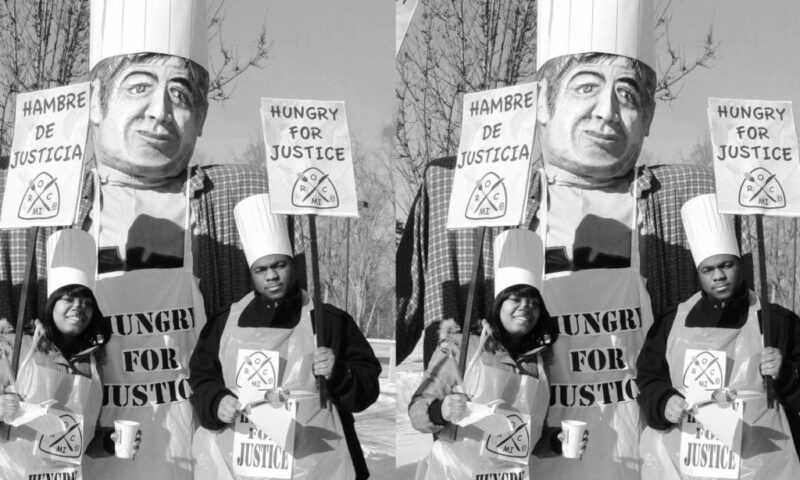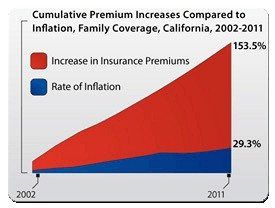


The California State Teachers’ Retirement System (CalSTRS) has filed a lawsuit against current and former members of Walmart’s board of directors, and other company officers, charging them with gross violation of fiduciary duty in connection with the company’s Mexican bribery scandal. That scandal, extensively examined by a recent New York Times feature, revealed a corporation so eager to expand its Mexican operations that it ignored findings by its own investigators sent to look into the allegations.
CalSTRS’ move takes the form of a derivative-action suit – a suit nominally brought on behalf of Walmart against individuals whose actions damage the retail giant and potentially, investors such as CalSTRS.
CalSTRS is the second largest public pension fund in the United States and holds more than 5.3 million shares of Wal-Mart, valued at $313.5 million, accounting for 0.41 percent of CalSTRS global equities portfolio.
» Read more about: Teachers’ Fund Lawyers-Up Against Walmart Brass »



I received no less than 25 emails celebrating the passage of the 2035 SCAG RTP within the past few weeks. This stands for the Southern California Association of Governments’ Regional Transportation Plan and Sustainable Communities Strategy. Environmentalists, low-income groups and housing groups all cheered the vast improvements to the way regional planning organizations look at future development. This new, more comprehensive view ideally would address the twin goals of creating more economically vibrant communities and improving our environment.
ClimatePlan, the California Pan-Ethnic Health Network and MOVE LA, among other groups, have praised the projected greenhouse gas, “vehicle miles traveled (VMT)” and traffic congestion reductions, as well as the forward-looking goals of increasing non-motorized transportation use, such as bicycles and walking.
Yet while there is much to take heart in, I started to ask myself: Could the SCAG plan have aimed even higher?
I salute the planners and community activists who brought a progressive vision and spent many long hours working on shaping the plan into what it is.
» Read more about: Could Transportation Plan Have Dreamt Bigger? »


(Editor’s Note: Tomorrow is the deadline to collect signatures for the Long Beach hotel workers living-wage ballot initiative. In this post, activist Christine Petit shares her perspective on this historic effort. Her feature first appeared on the California Work & Family Coalition Web site.)
In 2008, I chose to make Long Beach, California, my home. I love Long Beach because it’s a diverse city and there are always interesting events and festivals going on. Many people are attracted to Long Beach for these reasons, if only for a weekend. In fact, Long Beach has made great strides to attract tourists, investing approximately $750 million into revamping downtown toward these ends over the last three decades.
Meanwhile, the hotel workers who take care of Long Beach’s tourists are struggling to provide for their families. The median annual income for full-time hotel and food-service workers in Long Beach was $23,538 in 2009,
» Read more about: Living Wage Law Could Go to Long Beach Voters »


» Read more about: Riot Acts: Lalo Alcaraz on LA’s “Progress” »


Republican legislators in Michigan have a new target, the Michigan Restaurant Opportunities Center (ROC). Apparently at the behest of industry lobbyists, GOP Representative Joe Haveman proposed limiting the funding of public universities that allow their students to get internship credits for working with ROC.
The cause is rather specific: a few interns participated in a picket line outside Andiamo, an Italian restaurant in Dearborn, near Detroit. Workers had sought  to get paid overtime and get the owner to stop making them pay for their uniforms, among other demands. The company’s response (alleged surveillance and intimidation) led to several NLRB charges and a AFL-CIO sponsored boycott. The good news is, the dispute was settled back in May, 2011. The protests in question occurred back in 2009 and 2010.
to get paid overtime and get the owner to stop making them pay for their uniforms, among other demands. The company’s response (alleged surveillance and intimidation) led to several NLRB charges and a AFL-CIO sponsored boycott. The good news is, the dispute was settled back in May, 2011. The protests in question occurred back in 2009 and 2010.
As this blog post shows, restaurant industry folks weren’t too pleased, and thus the proposed new rule. The governor’s not in favor,



Memory is not only highly selective, but fatefully idiosyncratic. We remember – or forget – based on where we were, who we were with and, more elementally, who we are.
In April 1992, I was a 28-year-old editor of a now long-defunct weekly, the Village View. When violence erupted following the unfathomable not-guilty verdicts in the Rodney King beating trial, I was where I usually was in those days – knee deep in the grind of getting a paper to press. I wish I could recall exactly what I was doing, or who I was with, but those details are lost to history.
What I do know is that, because of who I was – the news editor of an alternative paper with few of the traditional restrictions that most journalists live with – my reaction to, and experience of, the civil unrest were defined not only by the fear and dread shared by many Angelenos,
» Read more about: 1992 Remembered: Memory, Truth and Justice »


 By Zack Kaldveer
By Zack Kaldveer
Consumer Federation of California
As California families continue to reel from the most severe economic downturn since the Great Depression, health insurance premium rates have soared by 153 percent since 2002, nearly five times the rate of inflation.
Businesses are finding it difficult to pay for these rate hikes, and pass the increased costs on to workers. Business owners and employees are forced to absorb these rising costs or search for less expensive – and less comprehensive – coverage options.
This injustice isn’t so hard to comprehend considering only four insurance companies control 71 percent of the California market – setting premiums behind closed doors and without accountability.
While businesses and families struggle to pay unaffordable premiums that have double digit increases every year and workers face high unemployment and stagnant wages, Blue Shield lavished its CEO with a $4.6 million salary and then proposed premium rate hikes as high as 59 percent in 2011 (but later revoked the proposal due to a massive public outcry).
» Read more about: Ballot Proposal Would Regulate Health Insurance Rates »



What I mostly remember about the riots is the smell of an urban fire – not the consoling, woody scent that wafts from a campfire, but the melting-telephone smell of a city’s guts ablaze. There was also the smoke, thick as tule fog – and the not-knowing, when you drove into it, if you’d come out on the other side.
There was something else about that week – a feeling that the world had been jolted a bit off its axis and nothing would ever be the same again, the way you feel after a breakup or car accident. The worst of it came on April 30. I had gone to a film screening in Santa Monica, and took my friend Kent to cheer him up from losing his job repairing pay phones. I was reviewing the movie for the L.A. Weekly, where I worked as an editor.



Wikimedia
If absence makes the heart grow fonder, distance makes reality look rosier. From a long way off Santa Monica appears like a liberal’s fantasy of justice in paradise. After all, we have a tough rent control law and we’ve had a mostly enlightened city council, government and school board for more than three decades. But from up close, the picture’s not that sweet.
A recent hotel approval exposed the reality. A developer wanted some special consideration for the 710 Wilshire hotel project that was oversized and out of conformance with zoning standards. Hotel workers in the city wanted to guarantee a decent wage for the people who would work in the new hotel as well as those who would build it. The city staff likes hotels because they provide an easy source of revenue. But the developer wouldn’t budge on the wage issues.
He wasn’t willing to require an operator to pay a decent income to hard-working,
» Read more about: Santa Monica Dreaming: Trouble in Rent-Controlled Paradise »


